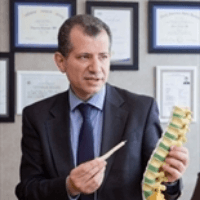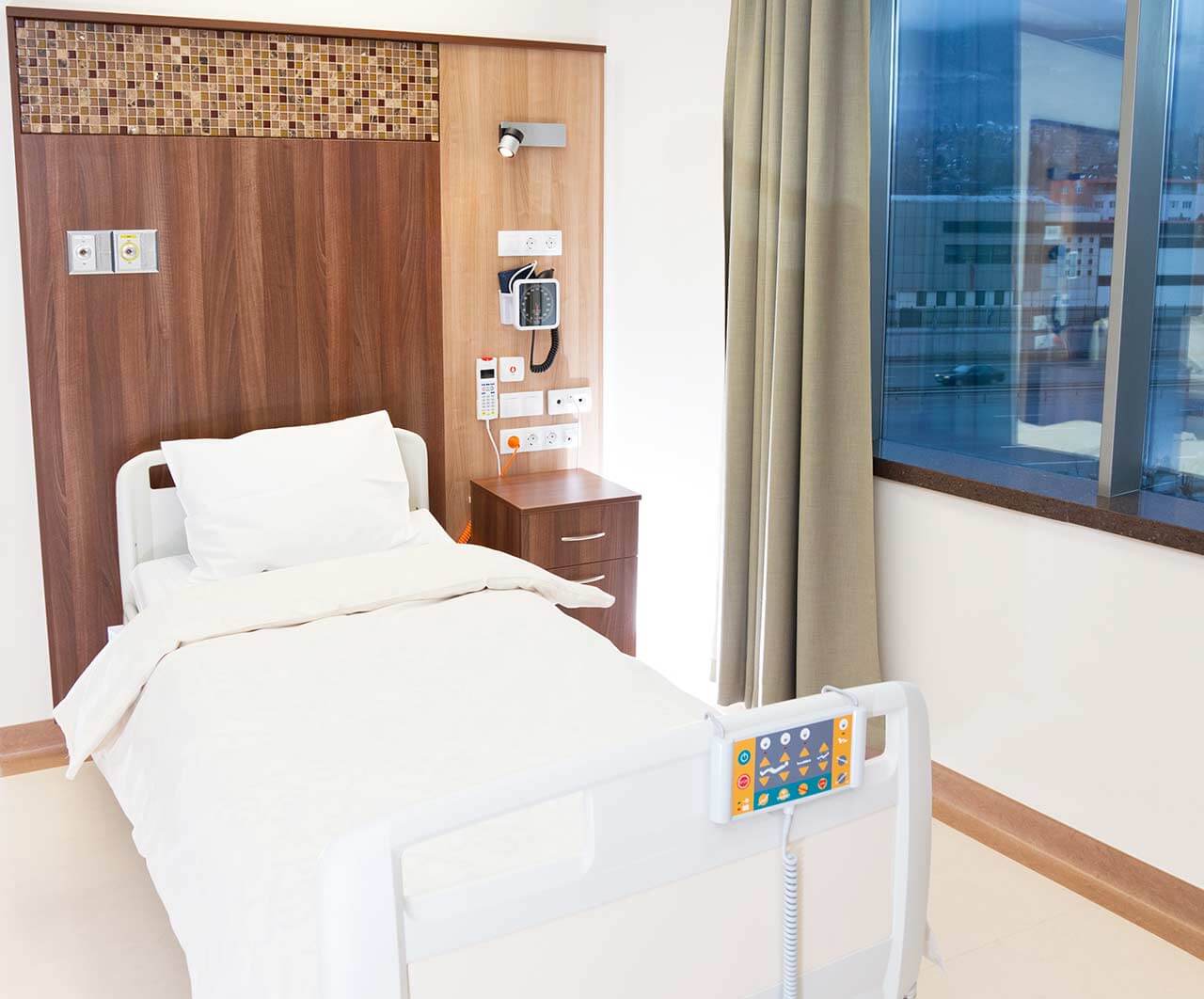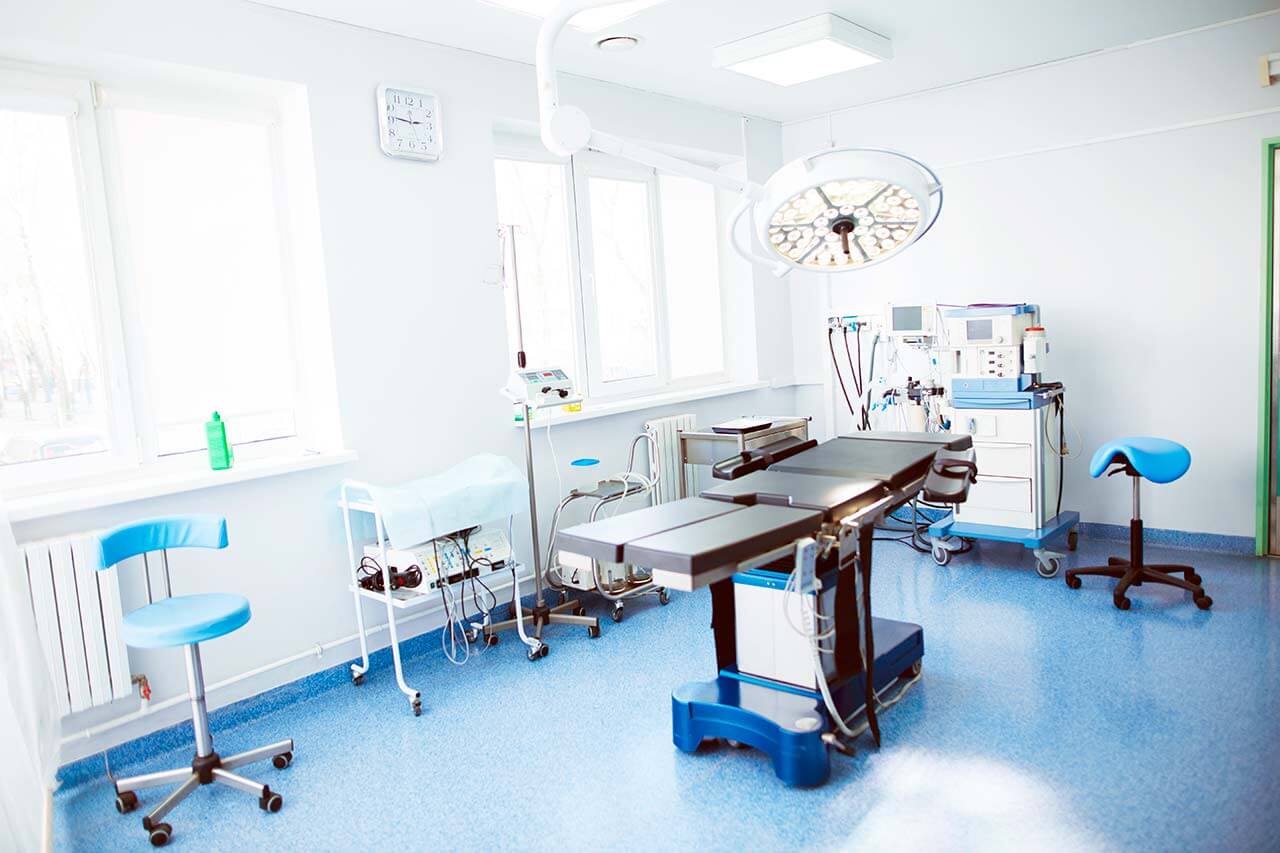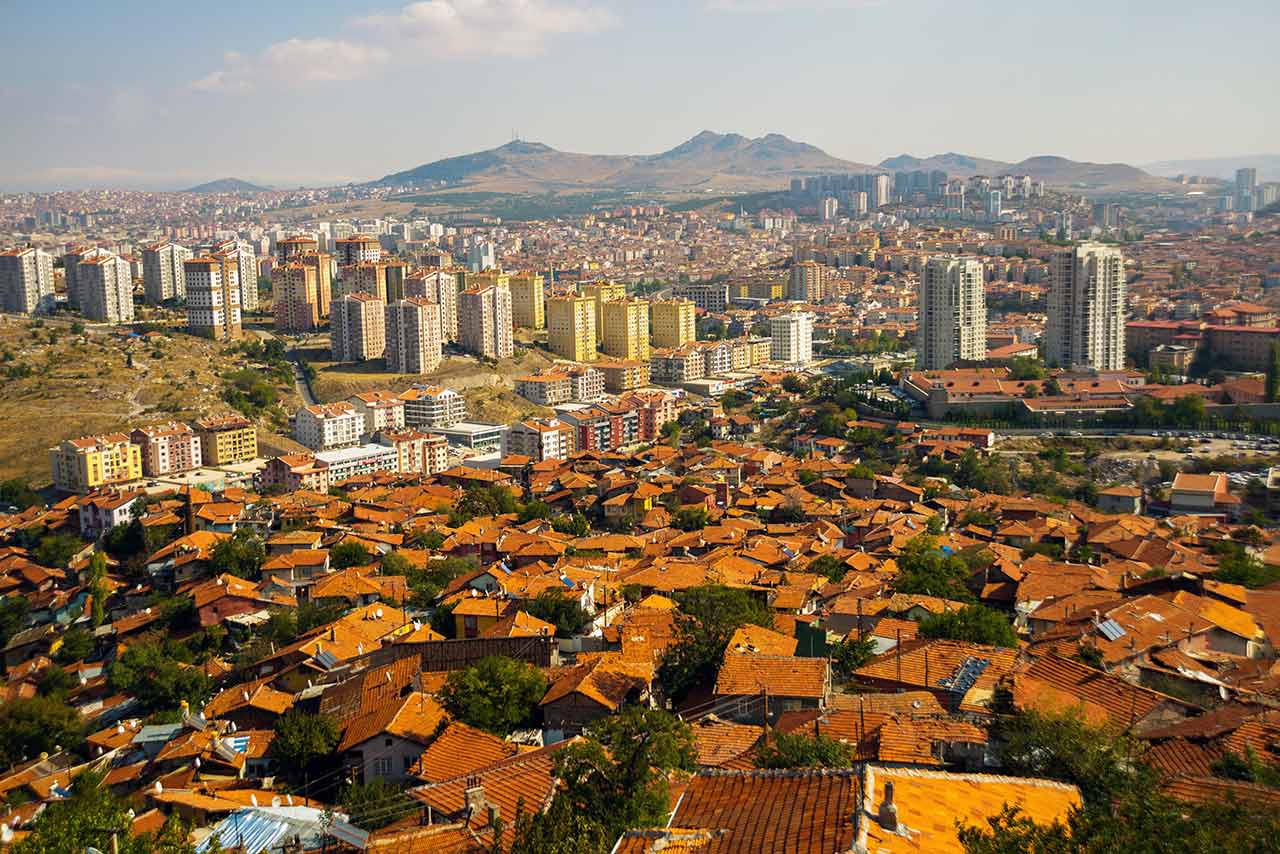
The program includes:
- Initial presentation in the clinic
- clinical history taking
- physical examination
- review of medical records
- laboratory tests:
- complete blood count
- general urine analysis
- biochemical analysis of blood
- indicators of inflammation
- indicators blood coagulation
- x-ray examination
- CT/MRI scan
- preoperative care
- hip replacement
- symptomatic treatment
- control examinations
- physiotherapeutic procedures
- orthopedic appliances
- the cost of essential medicines and materials
- nursing services
- full hospital accommodation
- explanation of future recommendations
How program is carried out
Preliminary preparation for hip replacement includes quitting smoking and drinking alcohol; cancelling non-steroidal anti-inflammatory drugs (diclofenac, ibuprofen); cancelling anticoagulants (warfarin); normalization of body mass, if possible.
Preoperative examination, including consultation with an anesthesiologist and necessary related specialists, takes 1-2 days. According to its results, the most suitable endoprosthesis is selected.
Hip replacement. The operation is performed under general anesthesia. The patient lies on his side, the affected leg is bent and fixed in this position. The surgeon makes an incision 15-20 cm long, minimally traumatizing the muscles and nerve endings. Through this incision, miniature instruments are inserted to remove the damaged joint structures. Healthy bone is adjusted for further reliable implant fixation.
The surgeon installs a femoral stem in the center of the upper part of the femur. Ball-shaped head of the joint is fixed on it. The surgeon also implants a special liner that facilitates movement of the leg and protects the structures of the prosthesis. After the primary fixation of the prosthesis components, the doctor assesses the joint range of motion, as well as the length and symmetry of the lower limb.
The implant is fixed with cement or cementless method. The doctor treats the operating field with antiseptics, conducts its final revision and sutures the wound layer by layer. A temporary drainage is installed in the joint, and a bandage is applied on top.
Postoperative care. During the first day after the intervention the patient stays in the intensive care unit, under round-the-clock medical supervision. After that, with a smooth course of the postoperative period, the patient is transferred to a regular ward and the drains are removed. The range of motion expands gradually, from light toes movements to walking. Walking with the use of walking aids is allowed in 3-5 days after the operation.
Required documents
- Medical records
- X-ray examination, MRI/CT scan (if available)
Service
You may also book:
 BookingHealth Price from:
BookingHealth Price from:
About the department
The Department of Adult and Pediatric Orthopedics and Traumatology at the Medicana International Ankara Hospital offers the full range of diagnostics and treatment of diseases of the musculoskeletal system. The special areas of specialization include spinal surgery and endoprosthetics. The high-precision medical equipment, robotic surgical devices and navigation surgery systems combined with the unique competence of the department’s doctors provide excellent treatment results of pathologies of any severity. The department is headed by Prof. Dr. med. Alpaslan Şenköylü, who ranks among the best specialists in Turkey in orthopedics and spinal surgery.
One of the priority focuses of the department is spinal surgery. Here are available all the latest conservative and surgical techniques for the elimination of spinal pain, posture disorders and development of accompanying problems with the joints, as well as neurological symptoms, which may occur at the progressive stages of the disease.
In addition, the department is proud of its outstanding achievements in the field of knee and hip replacement surgery. The department's surgeons perform both partial and total joint replacement using sparing minimally invasive techniques and modern endoprostheses made of metal or biological materials similar to human tissues. The final stage of treatment after surgery is physiotherapy. The patient performs a set of physical exercises under the guidance of the physician. It is also possible to use hardware therapy to restore mobility, for example, after knee replacement doctors use a special device, which moves the patient's knee when he is lying in bed.
The main clinical focuses of the department include:
- Spinal surgery (in close cooperation with the Departments of Neurosurgery, Neurology, Physiotherapy and Rehabilitation)
- Minimally invasive spinal surgery
- Microsurgical treatment of cervical, thoracic and lumbar spine hernias
- Spinal stenosis surgery
- Spondylolisthesis (vertebral dislocation) surgery
- Endoscopic treatment of pain syndromes
- Surgical treatment of spinal fractures
- Removal of spinal tumors
- Removal of spinal cord tumors
- Surgical treatment of head and spinal injuries
- Surgical treatment of brain tumors in adults and children
- Endoscopic pituitary surgery
- Cerebrovascular surgery
- Hydrocephalus surgery
- Correction of congenital spinal deformities
- Knee and hip endoprosthetics
- Total and partial knee replacement
- Total and partial hip replacement
- Arthroscopic joint interventions
- Reconstructive knee surgery (also in sports injuries)
- Cruciate ligament injuries
- Tendon ruptures
- Meniscus injuries
- Surgical and conservative treatment of injuries and fractures of the upper and lower limbs
- Surgical interventions
- Application of external fixation devices and intraosseous fixation systems
- Rehabilitation (physiotherapy, therapeutic exercise, etc.)
- Other medical services
Curriculum vitae
Education
- 1994 School of Medicine, Gazi University, Ankara.
- 2001 Residency, School of Medicine, Gazi University, Department of Orthopedics and Traumatology, Ankara.
Professional Career
- Since 2015 Professor, Department of Adult and Pediatric Orthopedics, Traumatology, Medicana International Ankara Hospital.
- 2013 Professor, Gazi University, Orthopedic Surgery.
- 2013 - 2014 Physician, Liv Hospital, Orthopedic Surgery.
- 2007- 2013 Associate Professor, Gazi University, Department of Orthopedic Surgery.
- 2009 Tohoku University, Japan, Asia Pacific Orthopedic Society, Soichi Kokubun Grant on Spinal Surgery.
- 2008 Riks Hospital, Oslo, Norway, Advanced Spinal Deformity Fellowship Program.
- 2008 Val De’Bron Hospital, Barcelona, Spain, Advanced Spinal Deformity Fellowship Program.
- 2005 - 2007 Assistant Professor, Gazi University, Orthopedic Surgery.
- 2005 Medical Officer, Clinical Fellow in Spinal Surgery, Hong Kong University.
- 2003 - 2005 Director of the Residency Program on Orthopedics and Traumatology, Ankara Education and Research Hospital.
- 2001 - 2003 Medical Specialist in Orthopedic Surgery, METU Health Clinic.
- 1994 - 1995 General Practitioner, Göle State Hospital.
Memberships in Professional Societies
- Board Member, Turkish Spine Association.
- General Secretary, Turkish Orthopedic and Trauma Association.
- Board Member, Turkish Orthopedic and Trauma Education Association.
- Board Member, Turkish Orthopedic and Trauma Research Association.
- Active Member of the Scoliosis Research Society.
- Active Member, Eurospine (Education Committee).
- Active Member, AOSpine.
- Active Member, SICOT.
Photo of the doctor: (c) Medicana Health Group
About hospital
The Medicana International Ankara Hospital is one of the leading medical centers, which belongs to the largest medical network Medicana in Turkey. The hospital incorporates all specialties of the modern medicine under one roof. It particularly focuses on bone marrow transplantation, cardiology, cardiovascular surgery, medical oncology, radiation oncology, CyberKnife treatment, nuclear medicine, kidney transplantation, liver transplantation and IVF services.
With a large total indoor space (about 20,000 sq. km), 215 beds, modern architecture, high-end technology and modern quality management system, the hospital treats both Turkish citizens and many international patients. Every year, more and more patients from Europe, Russia, Northern Africa and Middle East come to Ankara to receive modern medical treatment, which meets the strictest quality standards.
A particular clinical focus is cancer treatment. The hospital has at its disposal state-of-the-art medical technologies, including, multislice CT, PET-CT, MRI ultrasound, LINAC linear accelerators capable of making IMRT, conventional and interventional radiology, nuclear medicine imaging methods and radiation oncology, which allow the physicians of the hospital to provide comprehensive diagnostics and treatment of all oncological diseases.
The hospital has brought together the best medical academic staff in the field of kidney, liver and bone marrow transplantation, etc. All employees of the hospital are constantly looking for new, clinically proven treatments in order to ensure that each patient will receive the best and most appropriate treatment in Ankara.
Photo: (c) depositphotos
Accommodation in hospital
Patients rooms
The patients of the Medicana International Ankara Hospital live in comfortable modern rooms designed in bright colors. A standard room includes an automatically adjustable bed, a bedside table, a wardrobe, a shower, a toilet, and a TV set. There is internet access in the patient rooms. The hospital also provides VIP patient rooms.
Meals and Menus
The patients of the hospital are offered a tasty, balanced three meals a day: breakfast, lunch and dinner. With appropriate indications, there may be provided a dietary or individual menu.
Further details
Standard rooms include:





